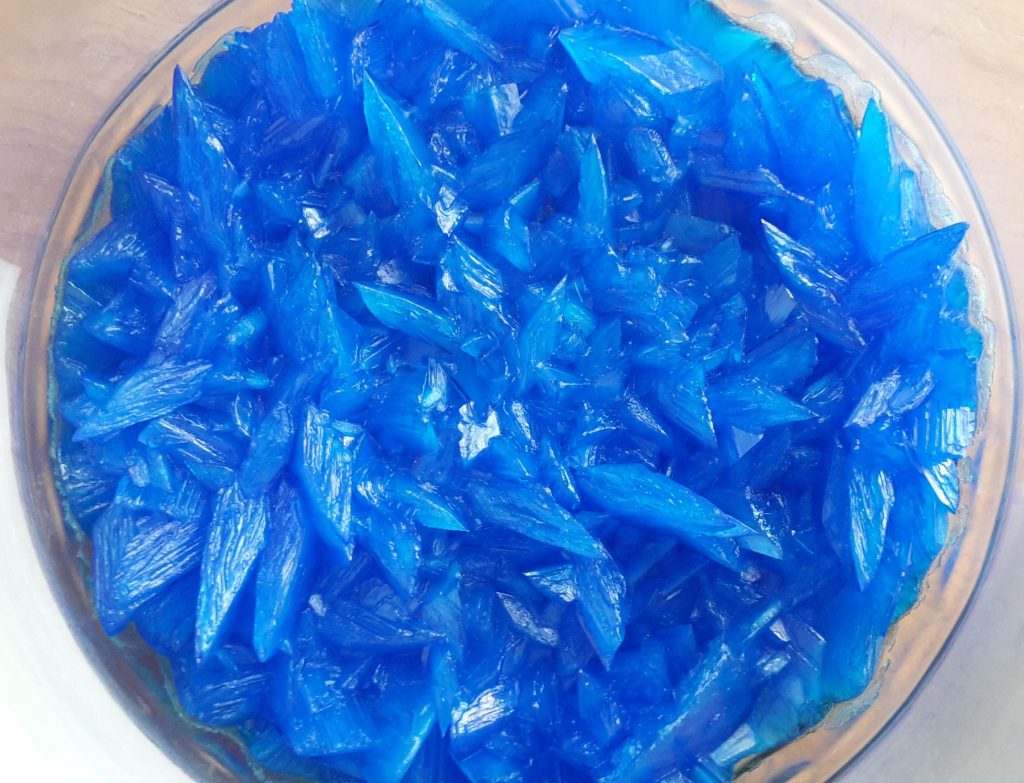Copper sulfate or blue stone is the common name of what is actually CuSO4 5H2O copper sulfate pentahydrate. This is the most common of all copper salts. This universal substance has many uses, but it is mainly used in agriculture. Copper sulfate is a salt formed by the reaction of sulfuric acid with various copper compounds, such as copper (II) oxide. This reaction, for example, is a neutralization reaction between a strong acid and a basic anhydride. The resulting products will be copper sulfate and water. Remember that copper sulfate is the old name of copper (II) sulfate. This salt, however, has an acidic property. It has a strong affinity for water molecules, so it can rarely be found in the form of pure white crystals of copper (II) sulfate.
 In agriculture, copper sulfate is used as a pesticide and fertilizer:
In agriculture, copper sulfate is used as a pesticide and fertilizer:
The pesticidal property of blue matter is due to its ability to kill fungi, weeds and certain parasites. In agriculture, Copper sulphate is mixed with lime (common name for several calcium compounds, usually calcium oxide or calcium hydroxide). This powerful mixture is called Bordeaux mixture, thanks to its name due to its early discovery and its use in Bordeaux, France. This is an effective remedy for fungi. Protects crops from fungal infections. The fungus, when left unchecked, damages farmers and threatens cultivation.
Conclusion
Another important copper mixture is the Burgundy mixture. This is made of a combination of copper sulfate and sodium carbonate (sodium bicarbonate). The Burgundy mixture has the same pesticidal properties as the Bordeaux mixture. These mixtures are sprayed on the plants when fungal spores are found on the surface of the plants, since the fungal spores are buried under the tissues of the plants and, when this happens, they are difficult to eradicate. Therefore, the correct timing of application of copper fungicides is important. Fungal spores, when exposed to minimal concentrations of copper fungicides, die quickly, and a wide range of fungal species is susceptible to these fungicides.




